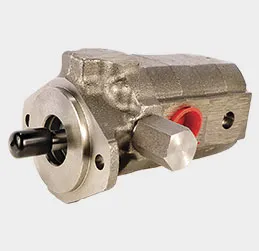aluminium gravity die casting
Understanding Aluminium Gravity Die Casting An Overview
Aluminium gravity die casting, also known as permanent mold casting, is a highly efficient manufacturing process used to produce complex shapes with a high degree of accuracy. This method is particularly favored in various industries, including automotive, aerospace, and consumer electronics, due to the material's lightweight nature, excellent mechanical properties, and corrosion resistance. In this article, we will delve into the fundamentals of aluminium gravity die casting, its advantages, applications, and considerations in modern production environments.
The Gravity Die Casting Process
The gravity die casting process involves pouring molten aluminium alloy into a reusable metal mold (or die) under the influence of gravity. The die typically consists of two halves that are tightly clamped together during pouring. Once the molten metal is introduced, it fills the cavity, taking shape from the mold. After the metal solidifies, which usually occurs relatively quickly due to the conductive nature of the die, the mold is opened, and the finished casting is ejected.
This method stands in contrast to other casting processes, such as sand casting or investment casting, where the molds are generally expendable. The use of permanent molds allows for higher production rates and the potential for intricate designs, making gravity die casting an attractive option for many manufacturers.
Advantages of Aluminium Gravity Die Casting
1. High Dimensional Accuracy One of the prominent advantages of aluminium gravity die casting is the precision it offers. The rigid structure of the metal molds allows for tighter tolerances, thus reducing the need for extensive machining post-casting.
2. Smooth Surface Finish The nature of gravity die casting results in parts with a superior surface finish compared to those produced by sand casting. This quality can minimize or eliminate the need for additional finishing work.
3. Material Efficiency The aluminum alloys used in gravity die casting typically yield less scrap material than other processes. The reusable nature of the molds also contributes to reduced material waste, aligning with sustainable manufacturing practices.
4. Strength and Durability Aluminium parts produced through gravity die casting exhibit excellent mechanical properties, including good tensile strength and fatigue resistance. This durability is essential for components subjected to demanding operational conditions.
aluminium gravity die casting

Applications of Aluminium Gravity Die Casting
Aluminium gravity die casting is utilized in a vast array of applications where strength-to-weight ratios are crucial. Key industries and uses include
- Automotive Components Many automotive parts, such as engine blocks, transmission cases, and structural components, are made using aluminium gravity die casting due to the method’s efficiency and the lightweight yet sturdy properties of aluminium.
- Aerospace Parts Components that require high strength and lightweight characteristics are often produced through this casting method, including housings and brackets for aircraft.
- Consumer Electronics Modern electronics often utilize die-cast aluminium enclosures to enhance aesthetic appeal while providing structural integrity.
- Industrial Equipment Various industrial machinery components, including housings, brackets, and frames, benefit from the advantages offered by aluminum gravity die casting.
Considerations in Aluminium Gravity Die Casting
While gravity die casting has numerous benefits, some challenges must be addressed. The initial costs associated with making high-quality molds can be significant, impacting small-scale operations. Additionally, the process requires meticulous control over pouring temperatures and times to ensure optimal results, as variations can lead to defects like air entrapment or surface imperfections.
Furthermore, while aluminium is versatile, it has limitations in comparison to other metals such as steel in terms of strength at elevated temperatures. Thus, understanding the specific needs and constraints of the application at hand is vital for successful implementation of this casting method.
Conclusion
In summary, aluminium gravity die casting is a highly effective manufacturing process offering numerous advantages, including accuracy, surface finish, material efficiency, and cost-effectiveness for high-volume production. Its applications across various sectors underline its versatility and importance in modern manufacturing. As technology continues to evolve, the potential for aluminium gravity die casting will only grow, further emphasizing its relevance in the industrial landscape. Understanding this process empowers manufacturers to make informed decisions, driving innovation and quality in product development.
-
OEM Sand Cast Pump Valve Fittings - Hairun Sourcing | Precision Engineering, Industrial EfficiencyNewsJul.13,2025
-
EcoGuard 3000 - Sustainable Agriculture Solution&Soil Health ImprovementNewsJul.13,2025
-
SmartAgri Solutions: Smart Farming Tech | AI Analytics & IoT SensorsNewsJul.13,2025
-
[Product Name]-[Company Name]|Business Efficiency&InnovationNewsJul.13,2025
-
Smart Factory Solutions-Industrial Efficiency|Real-Time Analytics&Automated WorkflowNewsJul.12,2025
-
OEM Sand Cast Pump Valve Fittings - Hairun Sourcing | Durable, Reliable, CustomizedNewsJul.12,2025















